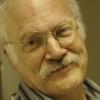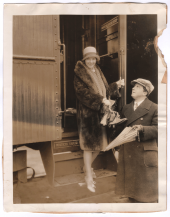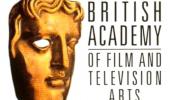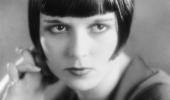Willem Dafoe incarnates Vincent Van Gogh, and his tortured process, in 'At Eternity's Gate'
Beethoven and Van Gogh had more in common than problematic ears.
To a critic who described his dissonant late string quartets as “not music,” the composer responded: “Oh, they are not for you, but for a later age.”
Confronted by similar dismissals, Van Gogh says, “Maybe God made me a painter for people who are not born yet.”
A great artist considered not so great at the time is the subject of Julian Schnabel’s “At Eternity’s Gate,” less a biopic than a psycho-artistic essay on insanity and genius.
Director Schnabel’s version of the Van Gogh story begins late in his short life with his move from gray Holland to picturesque Arles, France, where impoverished post-impressionists like himself, Paul Gauguin and Toulouse Lautrec gather in the local watering hole and argue about forming an artistic collective to support themselves.
- Starring: Willem Dafoe, Rupert Friend, Oscar Isaac, Mathieu Amalric.
- Rating: PG-13 for thematic content.
Vincent (Willem Dafoe) and Gauguin (Oscar Isaac) will spend nine fateful weeks painting together there in 1888, with wildly different techniques and philosophies. One of the friends’ (and the film’s) best moments is a heavy discussion (“We have to start a revolution,” says G.; “We have to change the relationship between people and painting,” says V.) conducted entirely while peeing in a field.
What do you paint? Vincent is asked. “Sunlight,” he answers — a new kind of light for sunflowers and starry nights alike. A new way of perception. Gauguin paints calmly and carefully; Van Gogh, fast and furious: “The faster I paint, the better I feel.” It’s only a matter of time before Gauguin decides to leave in search of more exotic inspiration in Polynesia.
At which point, disconsolate Vincent severs his left ear.
This is an “art film” in every sense. The director calls it “not a forensic biography” but “an accumulation of scenes” based on Van Gogh’s 600 extraordinarily articulate letters to his brother Theo, incorporating “actual events, hearsay and scenes that are just plain invented.” Prior to filmmaking, Mr. Schnabel gained international acclaim for his neo-expressionist large-scale “plate paintings” on broken ceramics. As director, he has devoted himself to tales of artists with burdensome badges of misery and inner entrapment, including “Basquiat” (1996); “Before Night Falls” (2000), which earned an Oscar nomination of Javier Bardem as Cuban writer Reinaldo Arenas; and the brilliant “Diving Bell and the Butterfly” (2007), about editor Jean-Dominique Bauby, left totally paralyzed by a stroke but for his left eye.
Here, the dialectic rises from art to the theological level of Joan of Arc’s trial — or Jesus’ own before Pilate, dueling with a priest (Mads Mikkelsen), who may or may not release him from an insane asylum. It works, thanks to Mr. Dafoe’s quiet, unbombastic performance as a reticent, polite, serious man who wants to fit in but never quite can. At 62, Mr. Dafoe is 25 years older than Van Gogh when he died (at 37) — but perfectly looks and acts the part.
Rupert Friend is wonderful as beloved brother Theo, and Oscar Isaac (of the Coen Bros “Inside Llewyn Davis”) is a terrific Gaughin. The intense ECU scenes with Emmanuelle Seigner as the famed L’Arlésienne (“woman from Arles”) of many portraits are a delight. So is the fine, spare piano music of Tatiana Lisovskaya.
It’s by no means perfect. The hand-held camera photography suggesting Vincent’s distorted vision and fragmented state of mind is so dizzyingly jerky at times you have to close your eyes to avoid nausea. And the “split diopter” lens used to create a vertiginous effect of two different depths of field in the same image is akin to looking through the middle line of bifocals. French is used in the beginning and a few subsequent scenes where Vincent is threatened by hostile townsfolk and school children. But since Van Gogh himself spoke poor French (and was often mocked for it), the decision to put most of the dialogue in American English — sans Dutch or British accents — is basically agreeable and wise.
You’ll have to be the judge of the violent event that ends Van Gogh’s life.
Suffice to say, we’re not in Kirk Douglas-Anthony Quinn chew-up-the-scenery “Lust for Life” territory here — nor that of Robert Altman’s sweeping 1990 epic “Vincent & Theo.”
We’re just in the head of a quintessential tortured artist, whose liberation of color and impulsive brushwork — at once both realistic and surreal — paved the way for the Fauves, the German expressionists and the approaching abstractions of modern art. No other painter appeals so directly to the senses as Van Gogh, who created 2,100 works, despite psychotic episodes, hallucinations and heavy drinking, and who had to die young to be appreciated.
He sold fewer than half a dozen pieces in his lifetime. Nowadays, they average $50 million to $100 million apiece. In this fascinating film’s stunning finale, he lies in state — or estate — amid his own paintings for sale.
“Are all painters crazy?” asks one madman at the St. Remy asylum.
“Only the great ones,” answers another.
Post-Gazette film critic emeritus Barry Paris: parispg48@aol.com.







